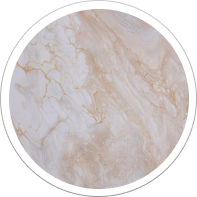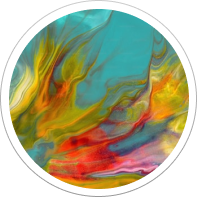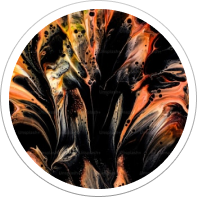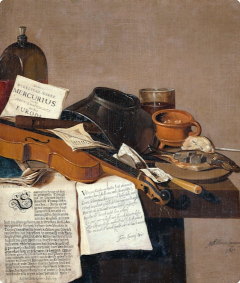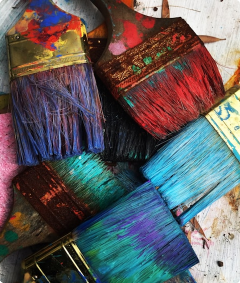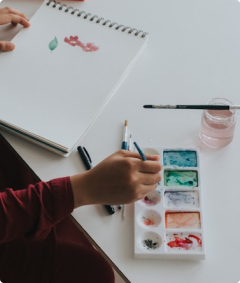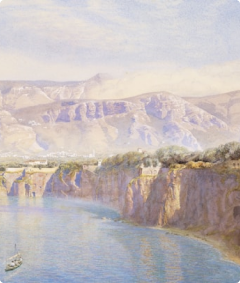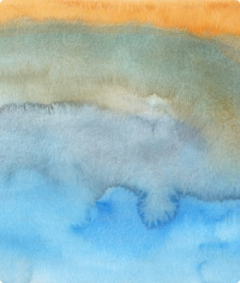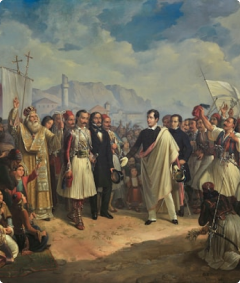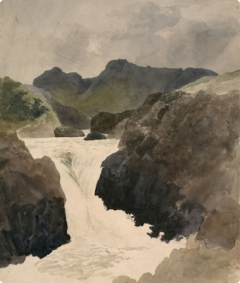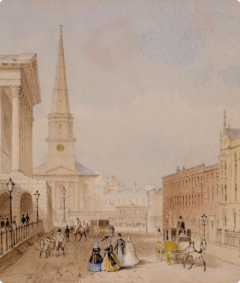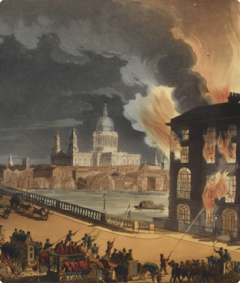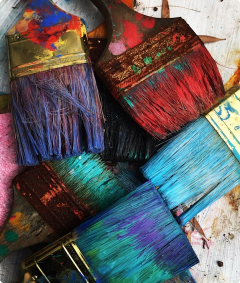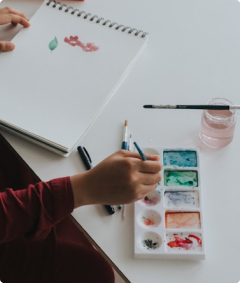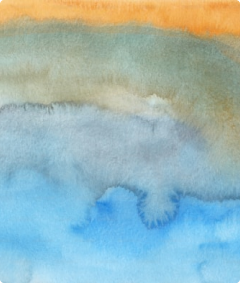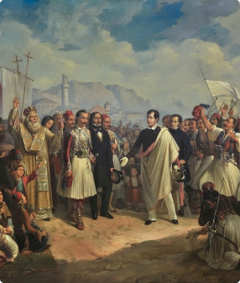
Top Seller
Canvas Prints & Photo Tiles, Wall Art from Jodello
Transform your space with Jodello’s canvas prints, photo tiles, and custom wall art. Turn memories and designs into stunning decor that reflects your unique style.
Get Started







How It Works:
Transform your space with Jodello’s canvas prints, photo tiles, and custom wall art.

1. Add Photos
Upload your favorite moments.

2. We Deliver
Get your custom prints fast.

3. You Stick
Peel, stick, and transform your walls effortlessly.

Featured Categories

Your Cherished Moments, Beautifully Displayed
Transform your space with top-quality, customizable canvas prints. From cherished moments to stunning artwork, Jodello offers a seamless way to craft beautiful pieces that showcase your unique taste.
Get Started
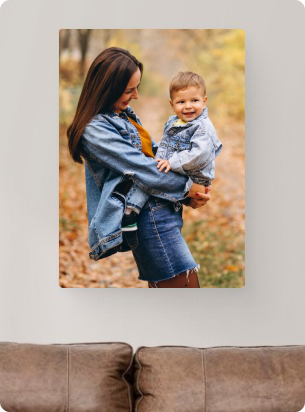
Why You'll Love Jodello

Seamless Installation
Easy-to-mount prints, no tools needed

No Damage, No Hassle
Sticks securely, removes cleanly

Endlessly Customizable
Designs that fit your style effortlessly

Customer Testimonials
Discover the conversations happening around our brand and see what our customers are saying about their experiences with us.
"I recently purchased a stunning canvas from Jodello, and I couldn't be happier with my choice! The vibrant colors and exquisite detail have truly transformed my living room. “


Liam Carter
"I recently purchased a stunning canvas from Jodello, and I couldn't be happier with my choice! The vibrant colors and exquisite detail have truly transformed my living room. “


Liam Carter
"I recently purchased a stunning canvas from Jodello, and I couldn't be happier with my choice! The vibrant colors and exquisite detail have truly transformed my living room. “


Liam Carter
FAQs
Easy-to-mount prints, no tools needed
Easy-to-mount prints, no tools needed
Easy-to-mount prints, no tools needed
Easy-to-mount prints, no tools needed
Easy-to-mount prints, no tools needed
Easy-to-mount prints, no tools needed
Easy-to-mount prints, no tools needed
Easy-to-mount prints, no tools needed
Large Framed Wall Pictures & Canvas Prints: Transform Spaces with Monumental Design Proportions
The contemporary art landscape has witnessed an unprecedented surge in demand for oversized decorative pieces that command attention and redefine spatial dynamics. Extra large wall art has emerged as the quintessential solution for creating dramatic focal points in both residential and commercial environments. This monumental approach to interior decoration transcends traditional boundaries, offering unlimited creative possibilities for designers, artists, and entrepreneurs seeking to capitalize on this burgeoning market trend.
The evolution of oversized artistic displays reflects society's growing appreciation for bold, statement-making pieces that serve as conversation starters and aesthetic anchors. These colossal creations possess the remarkable ability to transform mundane spaces into extraordinary environments, elevating the ordinary into the sublime through sheer scale and visual impact.
Revolutionizing Interior Spaces Through Colossal Artistic Expressions
The paradigm shift toward expansive decorative elements represents more than a fleeting trend; it embodies a fundamental transformation in how we perceive and interact with our living spaces. Extra large wall art serves as a powerful tool for spatial manipulation, capable of altering perceived dimensions, creating illusions of grandeur, and establishing emotional connections between viewers and their environments.
Contemporary homeowners and commercial space designers increasingly recognize the transformative potential of oversized artistic installations. These magnificent pieces function as architectural elements in their own right, blurring the boundaries between art and design while creating immersive experiences that engage viewers on multiple sensory levels.
The psychological impact of monumental art cannot be understated. Research in environmental psychology demonstrates that exposure to large-scale visual stimuli triggers profound emotional responses, enhancing mood, reducing stress, and fostering creativity. This scientific understanding has propelled the adoption of oversized decorative elements across diverse settings, from luxury residences to corporate headquarters.
Print-on-demand platforms have revolutionized accessibility to custom extra large wall art, democratizing the creation and distribution of oversized artistic pieces. This technological advancement enables artists and entrepreneurs to produce stunning large-format prints without substantial upfront investments, opening new revenue streams and creative opportunities.
The manufacturing capabilities for producing exceptional quality prints at massive scales have evolved dramatically, incorporating advanced printing technologies, premium substrates, and innovative finishing techniques. These developments ensure that extra large wall art maintains impeccable quality standards while remaining economically viable for mass production.
Market research indicates that the oversized art segment experiences consistent growth, with particular strength in urban markets where space premiums drive demand for impactful decorative solutions. This trend spans multiple demographics, appealing to millennials seeking Instagram-worthy interiors and established professionals investing in sophisticated office environments.
Exploring Diverse Product Categories for Maximum Impact
The realm of extra large wall art encompasses an extensive array of product categories, each offering unique aesthetic qualities and practical advantages. Understanding these distinctions enables informed decision-making when selecting appropriate products for specific applications and target markets.
Canvas prints represent the most popular category within the extra large wall art segment, combining traditional artistic appeal with modern production techniques. These versatile pieces adapt seamlessly to various design schemes, from contemporary minimalism to classical elegance. The fabric texture of canvas adds tactile dimension to printed images, creating depth and authenticity that resonates with art enthusiasts.
Stretched canvas configurations provide museum-quality presentation while maintaining cost-effectiveness for commercial production. The gallery-wrapped edges eliminate the need for additional framing, creating clean, modern appearances that complement contemporary interior design trends. This streamlined aesthetic appeals particularly to younger demographics who favor uncluttered, sophisticated environments.
Float framed canvas presentations elevate the perceived value of oversized prints by incorporating sophisticated mounting systems that create subtle shadow effects. This premium approach positions artwork as gallery-worthy investments, justifying higher price points while enhancing customer satisfaction through perceived luxury.
Box framed prints offer versatile solutions that bridge traditional and contemporary design preferences. The substantial frame profiles provide structural support for large-format prints while creating substantial visual presence that commands attention across expansive wall surfaces.
The dimensional qualities of box frames contribute to the architectural integration of oversized art pieces, allowing them to function as focal points that anchor room designs. The substantial depth created by these frames generates dynamic interplay between light and shadow, adding sculptural elements to two-dimensional artwork.
Material selection significantly influences the final aesthetic and durability of extra large wall art. Premium papers, fabrics, and synthetic substrates each contribute unique characteristics that affect color reproduction, texture, longevity, and visual appeal. Understanding these material properties enables optimal product selection for specific applications and customer preferences.
Color management becomes increasingly critical when scaling designs to monumental proportions. The expanded surface area amplifies any color inconsistencies or printing artifacts, making quality control paramount for maintaining professional standards and customer satisfaction.
Manufacturing Excellence in Supersized Dimensions
The production of exceptional extra large wall art demands sophisticated manufacturing processes that address the unique challenges of oversized printing. Precision color management, substrate handling, and finishing techniques must scale proportionally to maintain quality standards across dramatically increased surface areas.
Industrial-grade printing equipment specifically designed for large-format production ensures consistent color reproduction and sharp detail resolution across massive dimensions. These specialized systems incorporate advanced print head configurations, precise media handling mechanisms, and environmental controls that guarantee optimal printing conditions throughout extended production runs.
Quality assurance protocols for oversized prints require comprehensive inspection procedures that examine every aspect of the finished product. Visual inspection processes must account for viewing distances appropriate to the final installation environment, ensuring that quality standards align with actual usage scenarios.
Color calibration for large-format printing involves complex considerations beyond standard printing practices. The expanded viewing angles and varied lighting conditions typical of oversized art installations require sophisticated color profiling that accounts for environmental factors affecting color perception.
Substrate preparation for extra large wall art involves specialized handling procedures that prevent damage during production and shipping. Premium materials require careful tension management during mounting processes to prevent warping, buckling, or other distortions that could compromise the final appearance.
Finishing techniques for oversized pieces incorporate protective coatings and mounting systems designed to withstand the mechanical stresses associated with large-scale installations. These protective measures ensure longevity while maintaining aesthetic integrity throughout the product lifecycle.
Packaging and shipping considerations for extra large wall art require innovative solutions that protect valuable merchandise during transit while maintaining cost-effectiveness. Custom packaging systems accommodate the unique dimensional requirements of oversized pieces while providing adequate protection against damage.
Quality control checkpoints throughout the production process identify potential issues before they affect final products. These systematic evaluations encompass every aspect of production, from initial substrate preparation through final packaging, ensuring consistent excellence across all manufactured pieces.
Strategic Market Positioning for Oversized Artistic Ventures
The commercial landscape for extra large wall art presents numerous opportunities for entrepreneurs and established businesses seeking to expand their product offerings. Market segmentation analysis reveals distinct customer categories with varying needs, preferences, and purchasing behaviors that inform strategic positioning decisions.
Residential markets drive substantial demand for oversized decorative pieces, particularly in urban areas where high property values create pressure to maximize visual impact within limited spaces. Homeowners increasingly view extra large wall art as investment pieces that enhance property values while providing personal satisfaction through aesthetic enhancement.
Commercial applications represent significant growth opportunities for extra large wall art suppliers. Office buildings, hotels, restaurants, and retail establishments utilize oversized artistic installations to create memorable environments that enhance brand identity and customer experience. These commercial applications often involve larger order quantities and higher value transactions.
Interior design professionals constitute a crucial customer segment that influences purchasing decisions across both residential and commercial markets. Building relationships with design professionals creates recurring revenue opportunities while establishing credibility within the industry.
E-commerce platforms have dramatically expanded market reach for extra large wall art, enabling small businesses to compete effectively with established retailers. Online sales channels provide access to global markets while reducing overhead costs associated with physical retail locations.
Social media marketing proves particularly effective for promoting extra large wall art, as the visual nature of these products creates highly shareable content that generates organic reach and engagement. Platforms specializing in visual content provide ideal venues for showcasing the dramatic impact of oversized artistic installations.
Seasonal demand patterns significantly influence sales cycles for extra large wall art, with peak periods coinciding with home renovation seasons and major holidays. Understanding these cyclical patterns enables strategic inventory management and promotional planning that maximizes revenue opportunities.
Price positioning strategies must balance perceived value with market accessibility. Extra large wall art commands premium pricing due to material costs and production complexity, but pricing must remain competitive within target market segments to achieve sustainable sales volumes.
Creative Design Strategies for Monumental Proportions
Designing artwork specifically for extra large wall art requires sophisticated understanding of how visual elements interact at massive scales. Traditional design principles must be adapted to accommodate the unique challenges and opportunities presented by oversized formats.
Composition techniques for large-format artwork emphasize bold, simplified elements that maintain visual clarity across extended viewing distances. Intricate details that appear crisp in smaller formats may become indistinct when scaled to monumental proportions, necessitating design approaches that prioritize strong silhouettes and high-contrast elements.
Color palettes for extra large wall art benefit from strategic simplification that enhances readability and emotional impact. Expansive color fields create powerful atmospheric effects that would be impossible to achieve in smaller formats, while carefully orchestrated color relationships generate dynamic visual tension across vast surfaces.
Typography considerations for oversized pieces involve careful scaling calculations that ensure readability while maintaining aesthetic proportions. Letterforms must be robust enough to remain legible at viewing distances appropriate to the installation environment while contributing meaningfully to the overall composition.
Pattern and texture applications in extra large wall art create opportunities for innovative visual effects that exploit the expanded surface area. Repetitive elements can establish rhythmic patterns that guide viewer attention across the composition, while textural variations add tactile interest that engages multiple senses.
Abstract compositions often prove most successful when scaled to monumental proportions, as the expansive format allows for exploration of gestural mark-making and color relationships that create immersive viewing experiences. These non-representational approaches avoid the potential awkwardness of scaled figurative elements while maximizing emotional impact.
Photographic content for extra large wall art requires careful consideration of resolution requirements and compositional elements that remain compelling at massive scales. Landscape photography, architectural subjects, and macro imagery often translate successfully to oversized formats due to their inherent visual strength and detail richness.
Digital art creation for large-format printing necessitates working at extremely high resolutions that accommodate the expanded output dimensions. Artists must develop workflows that efficiently manage large file sizes while maintaining creative flexibility throughout the design process.
Material Sciences and Substrate Excellence
The foundation of exceptional extra large wall art lies in the sophisticated selection and application of premium substrates that provide optimal printing surfaces while ensuring longevity and visual appeal. Understanding material properties becomes crucial when scaling artwork to monumental dimensions, as the expanded surface area amplifies both positive attributes and potential deficiencies.
Canvas substrates for oversized printing incorporate advanced fiber compositions that provide dimensional stability while maintaining the traditional texture that art enthusiasts appreciate. Modern canvas formulations utilize synthetic blends that resist environmental degradation while preserving the organic appearance that distinguishes canvas from alternative substrates.
Paper selections for extra large wall art encompass specialty formulations designed specifically for large-format applications. These engineered papers incorporate enhanced tear resistance, moisture stability, and color retention properties that ensure consistent performance across expanded dimensions. The development of these specialized substrates represents significant investment in research and development by leading manufacturers.
Synthetic substrates offer exceptional durability and environmental resistance that make them ideal for commercial installations where longevity takes precedence over traditional aesthetic qualities. These materials incorporate advanced polymer compositions that resist fading, moisture damage, and mechanical stress while providing excellent print quality.
Adhesion technologies for mounting extra large wall art utilize advanced bonding systems that distribute mechanical loads across expanded surface areas. These sophisticated mounting solutions ensure secure installation while accommodating the thermal expansion and contraction that occurs in varying environmental conditions.
Protective coatings for oversized prints incorporate nanotechnology formulations that provide invisible protection against environmental hazards while maintaining original appearance characteristics. These advanced coatings resist ultraviolet radiation, atmospheric pollutants, and physical damage without altering color reproduction or surface texture.
Texture enhancement techniques for large-format prints create tactile interest that engages viewers through multiple sensory channels. These surface treatments add dimensional complexity that becomes increasingly apparent as viewing distances decrease, rewarding close examination while maintaining impact from extended distances.
Substrate preparation procedures for extra large wall art involve meticulous quality control processes that eliminate potential defects before printing begins. These preparatory steps include tension adjustment, surface cleaning, and environmental conditioning that optimize printing results and ensure consistent quality across large production runs.
Commercial Production Scaling and Quality Assurance
The transition from concept to finished extra large wall art involves sophisticated production workflows that address the unique challenges of manufacturing oversized pieces while maintaining exceptional quality standards. These processes require specialized equipment, trained personnel, and comprehensive quality assurance protocols that ensure consistent results across varying production volumes.
Large-format printing systems incorporate precision engineering that maintains color accuracy and detail resolution across massive print areas. These sophisticated machines utilize multiple print head configurations, advanced media handling systems, and environmental controls that create optimal printing conditions for oversized production runs.
Color management for extra large wall art production involves calibrated workflows that account for the expanded viewing angles and varied lighting conditions typical of oversized installations. Sophisticated color profiling systems ensure accurate reproduction across different substrates while maintaining consistency between reprints and production runs.
Pre-production planning for oversized pieces requires detailed technical specifications that address every aspect of the manufacturing process. These comprehensive plans include substrate selection, color profiles, finishing requirements, packaging specifications, and shipping considerations that ensure successful project completion.
Production scheduling for extra large wall art must accommodate the extended processing times required for oversized pieces while maintaining efficient workflow management. Sophisticated scheduling systems balance production capacity with delivery requirements, ensuring timely completion without compromising quality standards.
Post-production finishing for oversized pieces involves specialized techniques that address the unique requirements of large-format artwork. These finishing processes include edge treatment, protective coating application, mounting preparation, and quality inspection procedures that ensure professional presentation.
Inventory management for extra large wall art requires careful consideration of storage requirements, handling procedures, and shipping logistics that accommodate the substantial dimensions of finished pieces. Efficient inventory systems minimize handling damage while maintaining accessibility for order fulfillment.
Customer service protocols for oversized art sales must address the unique concerns and questions that arise with large-format purchases. Specialized training ensures that customer service representatives can provide accurate information about specifications, shipping requirements, and installation considerations.
Market Dynamics and Consumer Behavior Patterns
The extra large wall art market exhibits distinctive characteristics that differentiate it from traditional art sales channels. Understanding these market dynamics enables strategic positioning that maximizes revenue opportunities while building sustainable customer relationships.
Consumer purchasing behavior for oversized art pieces involves extended decision-making processes that reflect the significant investment and permanent nature of these acquisitions. Buyers typically conduct extensive research, seek multiple opinions, and carefully consider installation requirements before committing to purchases.
Demographic analysis reveals that extra large wall art appeals primarily to affluent consumers with sophisticated design sensibilities and substantial disposable income. This target audience values quality, uniqueness, and aesthetic impact over price considerations, creating opportunities for premium pricing strategies.
Geographic market variations influence demand patterns for oversized art pieces, with urban areas demonstrating consistently higher consumption rates than rural markets. This geographic concentration enables targeted marketing strategies that focus resources on high-potential markets while maintaining cost-effectiveness.
Seasonal purchasing patterns for extra large wall art align with home renovation cycles and major holidays when consumers focus on interior decoration projects. Understanding these cyclical patterns enables strategic inventory planning and promotional timing that maximizes sales opportunities.
Online marketplace dynamics for oversized art present unique challenges related to shipping costs, return policies, and customer confidence in purchasing expensive items without physical inspection. Successful online retailers develop comprehensive strategies that address these concerns while maintaining profitability.
Brand positioning within the extra large wall art market requires careful consideration of quality perceptions, price expectations, and competitive differentiation. Successful brands establish clear value propositions that resonate with target audiences while maintaining sustainable profit margins.
Customer retention strategies for oversized art sales focus on building long-term relationships that generate repeat purchases and referral business. These approaches recognize that satisfied customers become brand ambassadors who influence purchasing decisions within their social networks.
Production Workflow Mastery and Operational Excellence
Achieving consistent excellence in extra large wall art production requires sophisticated workflow management that coordinates multiple specialized processes while maintaining quality standards and delivery schedules. These operational systems must scale efficiently to accommodate varying production volumes while preserving the attention to detail essential for premium products.
Order processing systems for oversized pieces incorporate comprehensive validation procedures that verify technical specifications, confirm substrate availability, and identify potential production challenges before manufacturing begins. These preliminary evaluations prevent costly errors while ensuring realistic delivery commitments.
Design file preparation for large-format printing involves technical expertise that addresses resolution requirements, color space management, and scaling calculations necessary for optimal reproduction quality. These preparatory processes require specialized software and trained personnel capable of managing complex digital assets.
Production planning for extra large wall art encompasses resource allocation, equipment scheduling, and workflow coordination that maximizes efficiency while maintaining quality standards. Sophisticated planning systems balance production capacity with order requirements, ensuring optimal utilization of manufacturing resources.
Quality checkpoints throughout the production process provide systematic evaluation of work-in-progress, enabling early detection and correction of potential issues. These inspection protocols ensure that quality standards are maintained consistently while minimizing waste and rework costs.
Shipping preparation for oversized pieces requires specialized packaging systems that protect valuable merchandise during transit while maintaining cost-effectiveness. Custom packaging solutions accommodate the unique dimensional requirements of large-format artwork while providing adequate protection against shipping damage.
Documentation systems for extra large wall art production maintain comprehensive records that enable traceability, quality analysis, and continuous improvement initiatives. These detailed records support customer service requirements while providing valuable data for operational optimization.
Performance metrics for oversized art production encompass quality indicators, efficiency measures, and customer satisfaction data that inform strategic decision-making. Regular analysis of these metrics enables continuous improvement initiatives that enhance operational excellence and competitive positioning.
Creative Collaboration and Design Innovation
The development of compelling extra large wall art often involves collaborative efforts between artists, designers, and production specialists who contribute unique expertise to create exceptional final products. These collaborative relationships foster innovation while ensuring technical feasibility and market viability.
Artist partnerships provide access to original creative content while establishing mutually beneficial relationships that support ongoing product development. Successful partnerships balance creative freedom with commercial requirements, ensuring that artistic vision aligns with market demand and production capabilities.
Design customization services enable customers to participate in the creative process while maintaining production efficiency. These services range from simple personalization options to comprehensive design consultation that results in completely custom oversized pieces.
Creative brief development for commissioned extra large wall art requires thorough understanding of customer preferences, spatial requirements, and aesthetic objectives. Detailed creative briefs ensure that final products meet customer expectations while providing clear guidance for artists and production teams.
Concept development processes for oversized pieces involve iterative refinement that balances creative vision with practical constraints. These development cycles incorporate customer feedback, technical feasibility assessments, and market research that inform design decisions.
Prototype creation for extra large wall art enables evaluation of design concepts at actual scale, revealing potential issues that may not be apparent in smaller formats. These full-scale prototypes provide valuable insights that inform final design decisions and production planning.
Revision procedures for commissioned pieces establish clear communication protocols that manage customer expectations while maintaining project timelines. Structured revision processes balance customer satisfaction with production efficiency, ensuring profitable project completion.
Intellectual property considerations for collaborative projects require clear agreements that protect the interests of all parties while enabling commercial exploitation of creative works. These legal frameworks provide foundation for sustainable business relationships that support ongoing collaboration.
Environmental Considerations and Sustainable Practices
The production of extra large wall art presents unique environmental challenges that responsible manufacturers address through comprehensive sustainability initiatives. These programs encompass material selection, production processes, packaging solutions, and end-of-life considerations that minimize environmental impact while maintaining product quality.
Sustainable substrate selection prioritizes renewable materials, recycled content, and environmentally responsible manufacturing processes. These material choices reduce environmental footprint while often providing superior performance characteristics that enhance product durability and customer satisfaction.
Eco-friendly printing technologies incorporate water-based inks, energy-efficient equipment, and waste reduction systems that minimize environmental impact throughout the production process. These green technologies often provide cost advantages while supporting corporate sustainability objectives.
Packaging sustainability for oversized pieces involves innovative solutions that protect valuable merchandise while minimizing material consumption and waste generation. Reusable packaging systems, biodegradable protective materials, and optimized package design contribute to environmental responsibility while maintaining product protection standards.
Carbon footprint reduction initiatives encompass transportation optimization, energy efficiency improvements, and renewable energy adoption that collectively minimize the environmental impact of extra large wall art production and distribution.
Waste stream management for large-format printing involves comprehensive recycling programs that divert production waste from landfills while recovering valuable materials for reuse. These circular economy approaches reduce environmental impact while often generating cost savings through material recovery.
Life cycle assessments for extra large wall art products provide comprehensive evaluation of environmental impacts from material extraction through end-of-life disposal. These assessments inform design decisions and process improvements that enhance environmental performance while maintaining commercial viability.
Certification programs for sustainable extra large wall art enable differentiation within environmentally conscious market segments. These third-party validations provide credible verification of environmental claims while supporting premium pricing strategies for eco-friendly products.
Future Trends and Market Evolution
The extra large wall art market continues evolving rapidly, driven by technological advancement, changing consumer preferences, and innovative business models that reshape traditional approaches to art production and distribution. Understanding emerging trends enables strategic positioning that capitalizes on future opportunities while avoiding potential market disruptions.
Digital transformation initiatives within the art industry create new possibilities for interactive and dynamic extra large wall art that incorporates electronic components and programmable displays. These hybrid products blur boundaries between traditional art and digital media while creating new revenue opportunities for innovative suppliers.
Augmented reality applications enable customers to visualize extra large wall art within their actual spaces before making purchasing decisions. These visualization tools reduce uncertainty while increasing customer confidence in expensive purchases, potentially improving conversion rates and reducing return costs.
Artificial intelligence applications in art creation and customization enable mass personalization of extra large wall art while maintaining production efficiency. These AI-powered tools can generate unique variations of popular designs while adapting compositions to specific dimensional requirements.
Subscription models for extra large wall art create recurring revenue streams while providing customers with regularly updated decorative options. These innovative business models recognize that customer preferences evolve over time while providing predictable revenue that supports business planning.
Smart home integration possibilities for oversized decorative pieces create opportunities for products that respond to environmental conditions, user preferences, or programmed schedules. These connected products represent the convergence of art and technology while creating new value propositions for tech-savvy consumers.
Blockchain technology applications in art authentication and provenance tracking provide solutions for concerns about authenticity and originality in the digital reproduction market. These distributed ledger systems create tamper-proof records that enhance buyer confidence while supporting premium pricing strategies.
Virtual reality showroom experiences enable customers to explore extra large wall art collections within immersive digital environments that simulate real installation conditions. These virtual experiences expand market reach while reducing the costs associated with physical display spaces.
Market Analysis and Consumer Behavior Patterns
The extra large wall art industry represents a sophisticated marketplace where aesthetic sensibilities converge with substantial purchasing decisions. Contemporary consumers increasingly gravitate toward statement pieces that transform living spaces into personalized sanctuaries of artistic expression. This market segment transcends traditional art collecting, encompassing residential consumers, commercial establishments, hospitality venues, and corporate environments seeking impactful visual elements.
Consumer demographics within this niche reveal fascinating purchasing patterns that diverge significantly from conventional art markets. Affluent millennials and Generation X professionals constitute primary purchaser segments, demonstrating willingness to invest substantially in singular artistic pieces that define entire rooms. These consumers prioritize authenticity, exclusivity, and emotional resonance over mass-produced alternatives, creating lucrative opportunities for businesses capable of delivering compelling narratives alongside exceptional products.
Geographic distribution of demand showcases concentrated purchasing power within metropolitan areas, particularly coastal regions where disposable income levels support premium pricing strategies. However, emerging markets in secondary cities present untapped potential as remote work trends democratize access to high-income employment opportunities. Understanding these demographic shifts enables strategic positioning that anticipates future demand patterns while capitalizing on current market concentrations.
Psychographic analysis reveals that extra large wall art purchasers value experiential consumption, viewing their acquisitions as investments in lifestyle enhancement rather than mere decorative purchases. These consumers actively seek products that reflect personal identity, social status, and aesthetic sophistication. They demonstrate strong preferences for limited edition pieces, custom commissions, and artworks that generate conversation within their social circles.
Seasonal purchasing patterns within the extra large wall art market exhibit distinct fluctuations that smart businesses leverage for inventory planning and promotional strategies. Peak demand periods typically coincide with home renovation seasons, major holidays, and corporate fiscal year-end budgets. Understanding these cyclical variations enables predictive inventory management that minimizes carrying costs while ensuring product availability during high-demand periods.
Price sensitivity analysis reveals that consumers within this market segment demonstrate remarkable tolerance for premium pricing when value propositions clearly communicate quality, exclusivity, and aesthetic impact. However, this tolerance diminishes rapidly when products fail to meet elevated expectations regarding craftsmanship, materials, or overall presentation. Successful businesses recognize that competing primarily on price within this market segment represents a path toward commoditization and reduced profitability.
Digital consumption habits among target demographics emphasize visual platforms and social media channels where potential customers discover new artists, trending styles, and inspirational interior design concepts. These platforms serve dual purposes as marketing channels and trend identification tools that inform product direction and promotional strategies. Businesses that effectively harness social media algorithms while maintaining authentic artistic integrity achieve superior customer acquisition results.
Production Excellence and Quality Assurance Frameworks
Manufacturing excellence within the extra large wall art industry demands sophisticated production systems that balance artistic integrity with commercial scalability. Quality assurance frameworks must address unique challenges inherent to oversized artistic productions, including material consistency across large surface areas, color accuracy maintenance, and structural integrity requirements that ensure longevity and safety.
Material selection processes for extra large wall art production require extensive supplier relationships that guarantee consistent quality standards across multiple production runs. Premium substrate materials, archival inks, and protective coatings represent significant cost components that directly impact final product quality and pricing strategies. Establishing relationships with multiple suppliers for critical materials provides supply chain resilience while maintaining negotiating leverage for favorable pricing terms.
Production workflow optimization encompasses equipment utilization, labor allocation, and quality control checkpoints that minimize defect rates while maximizing throughput efficiency. Large format printing equipment represents substantial capital investments that require careful capacity planning to ensure adequate return on investment. Implementing lean manufacturing principles adapted for artistic production environments reduces waste while maintaining the craftsmanship standards that differentiate premium products.
Color management systems become critically important when producing extra large wall art, as color variations that might be imperceptible in smaller formats become glaringly obvious across expansive surfaces. Implementing professional color management workflows, including regular calibration schedules and environmental lighting controls, ensures consistent color reproduction that meets customer expectations and reduces costly reprints.
Quality control protocols for oversized artistic productions must address inspection challenges unique to large format items. Traditional quality control methods prove inadequate when dealing with pieces that exceed standard workspace dimensions. Developing specialized inspection procedures, including sectional analysis techniques and remote viewing systems, maintains quality standards while accommodating physical constraints of large format production.
Packaging engineering for extra large wall art requires innovative solutions that protect valuable artistic pieces during transportation while managing shipping costs that could otherwise price products out of market reach. Custom packaging solutions often represent significant per-unit costs that must be balanced against damage prevention benefits. Developing standardized packaging systems that accommodate various artwork dimensions while maintaining protection standards achieves economies of scale that improve overall profitability.
Environmental controls within production facilities become paramount when manufacturing extra large wall art, as temperature and humidity variations can cause substrate materials to expand or contract, resulting in print quality issues or structural problems. Implementing comprehensive environmental monitoring and control systems ensures consistent production conditions that minimize defect rates and maintain product quality standards.
Strategic Positioning and Brand Differentiation
Brand positioning within the extra large wall art market requires sophisticated understanding of consumer psychology and competitive dynamics that influence purchasing decisions. Successful positioning strategies communicate unique value propositions that resonate with target demographics while establishing clear differentiation from competitive offerings. This differentiation often centers on artistic vision, production quality, customer experience, or innovative business models that create sustainable competitive advantages.
Artistic curation strategies significantly impact brand perception and market positioning within the oversized art industry. Developing distinctive artistic styles or maintaining relationships with exclusive artist networks creates brand identity that attracts specific consumer segments. Some businesses focus on contemporary abstract pieces, while others specialize in photographic reproductions or mixed media compositions. The key lies in developing coherent artistic direction that appeals to defined target markets while maintaining sufficient breadth to support sustainable sales volumes.
Premium positioning strategies within the extra large wall art market often emphasize exclusivity, craftsmanship, and personalization services that justify higher price points. These strategies require consistent execution across all customer touchpoints, from initial marketing messages through final product delivery and post-purchase support. Premium brands invest heavily in superior materials, meticulous production processes, and exceptional customer service that reinforce value perceptions and encourage customer loyalty.
Value positioning approaches focus on delivering exceptional quality and customer satisfaction at competitive price points, appealing to price-conscious consumers who nevertheless maintain high quality expectations. These strategies require operational efficiency and supply chain optimization that enables competitive pricing without compromising product quality or customer experience. Success depends on achieving cost advantages through scale economies, process improvements, or innovative business models.
Digital brand presence becomes increasingly critical as consumers research and purchase extra large wall art through online channels. Effective digital positioning requires compelling visual presentations, authentic customer testimonials, and engaging content that builds trust and emotional connections with potential purchasers. Social media platforms serve as primary discovery channels where artistic presentations and lifestyle integration examples influence purchasing decisions.
Storytelling capabilities significantly enhance brand differentiation within the extra large wall art market, as consumers seek products that reflect personal values and aesthetic preferences. Successful brands develop compelling narratives around artistic inspiration, production processes, environmental responsibility, or social impact that resonate with target customer values. These narratives create emotional connections that transcend purely transactional relationships and encourage customer advocacy.
Niche specialization strategies enable smaller businesses to compete effectively against larger competitors by focusing on specific market segments, artistic styles, or customer needs that remain underserved by mainstream offerings. Specialization allows businesses to develop deep expertise and customer relationships within focused market segments while achieving premium pricing through specialized knowledge and capabilities.
Customer Acquisition and Retention Methodologies
Customer acquisition within the extra large wall art market requires multifaceted approaches that address the extended decision-making processes characteristic of high-value artistic purchases. Potential customers typically engage in extensive research phases, comparing options across multiple suppliers while seeking validation for significant financial investments. Successful acquisition strategies acknowledge these extended sales cycles while providing compelling touchpoints that maintain engagement throughout the decision-making process.
Content marketing strategies for extra large wall art businesses focus on educating potential customers about artistic styles, interior design principles, and installation considerations that influence purchasing decisions. Educational content builds trust and positions businesses as knowledgeable partners rather than transactional vendors. Topics might include room proportion guidelines, lighting considerations, color coordination principles, or artistic movement histories that provide context for contemporary pieces.
Referral programs within the extra large wall art industry leverage the highly visual nature of products and strong emotional connections customers develop with their purchases. Satisfied customers naturally showcase their acquisitions to friends and family, creating organic marketing opportunities that businesses can systematically encourage through structured referral incentives. These programs often prove more cost-effective than traditional advertising while generating higher-quality leads from pre-qualified prospects.
Partnership networks with interior designers, architects, and home staging professionals create consistent lead generation channels while adding credibility to business offerings. These professional relationships require ongoing cultivation through exclusive pricing programs, priority service levels, and collaborative marketing efforts that benefit all parties. Professional partners often influence multiple purchasing decisions annually, making these relationships particularly valuable for sustained business growth.
Customer journey mapping reveals critical touchpoints where businesses can enhance experiences and increase conversion probabilities. The extended sales cycles characteristic of extra large wall art purchases create multiple interaction opportunities where exceptional service can differentiate competing offerings. Mapping these journeys enables systematic experience improvements that increase conversion rates and customer satisfaction levels.
Retention strategies for extra large wall art customers focus on building long-term relationships that generate repeat purchases and referral opportunities. While individual customers may not frequently purchase multiple extra large pieces, satisfied customers often recommend suppliers to friends, family, and professional contacts. Additionally, customers may seek additional pieces for different rooms or properties over time, making retention efforts valuable investments in future revenue streams.
Digital marketing strategies must accommodate the visual nature of extra large wall art while addressing the research-intensive purchasing behaviors of target customers. High-quality photography, virtual room visualization tools, and detailed product specifications become essential components of digital marketing efforts. These tools help potential customers envision products within their spaces while building confidence in purchasing decisions for items they cannot easily return or exchange.
Operational Excellence and Supply Chain Management
Supply chain management for extra large wall art businesses involves coordinating complex networks of suppliers, production facilities, and distribution partners that collectively deliver finished products to end customers. The oversized nature of these products creates unique logistical challenges that require specialized solutions across procurement, production, storage, and delivery phases of the supply chain.
Supplier relationship management becomes critically important when dealing with specialized materials and services required for extra large wall art production. Key supplier categories include substrate manufacturers, ink suppliers, hardware providers, packaging specialists, and transportation companies capable of handling oversized shipments. Diversifying supplier relationships reduces risk while maintaining negotiating leverage that supports favorable pricing and service terms.
Inventory management strategies for extra large wall art must balance carrying costs against stockout risks in a market where customer wait times significantly impact satisfaction levels. The substantial storage space requirements for oversized inventory create significant facility costs that must be optimized through strategic inventory planning. Some businesses adopt make-to-order production models that minimize inventory carrying costs while extending delivery timeframes.
Production scheduling systems coordinate complex workflows that often involve multiple production stages, quality control checkpoints, and customer approval processes for custom orders. Effective scheduling balances production efficiency with delivery commitments while maintaining flexibility to accommodate rush orders or design modifications. These systems become particularly important when managing multiple large format projects simultaneously.
Warehouse operations for extra large wall art require specialized facilities with adequate ceiling heights, handling equipment, and storage systems designed for oversized items. Standard warehouse layouts prove inadequate for businesses handling substantial volumes of large format artwork. Designing efficient warehouse workflows reduces handling damage while minimizing labor costs associated with moving heavy, awkward items.
Transportation logistics represent significant cost components for extra large wall art businesses, as standard shipping methods prove inadequate for oversized items. Developing relationships with specialized freight carriers provides reliable delivery options while managing shipping costs that could otherwise eliminate profit margins. Some businesses invest in proprietary delivery capabilities for local markets where delivery frequency justifies dedicated resources.
Quality assurance integration throughout supply chain operations ensures that quality standards are maintained from initial material procurement through final customer delivery. This integration requires clear quality specifications, regular supplier audits, and systematic quality monitoring at each supply chain stage. Proactive quality management prevents costly defects while maintaining the premium product standards essential for market positioning.
Revenue Diversification and Profit Maximization
Revenue diversification strategies within the extra large wall art market create multiple income streams that reduce dependence on any single revenue source while maximizing overall profitability. Successful businesses develop complementary revenue streams that leverage existing capabilities while serving different customer segments or market needs.
Custom commission services represent lucrative revenue opportunities that command premium pricing while showcasing artistic capabilities. These services appeal to customers seeking truly unique pieces that reflect personal preferences or specific space requirements. Commission work often generates higher profit margins than standard product sales while creating memorable customer experiences that encourage referrals and testimonials.
Licensing arrangements with artists provide scalable revenue streams that minimize production risks while expanding product catalogs. These arrangements enable businesses to offer diverse artistic styles without maintaining large artist payrolls or inventory investments. Successful licensing strategies balance artist compensation with business profitability while ensuring artistic quality standards that support brand positioning.
Installation service offerings create additional revenue streams while ensuring proper product placement that maximizes customer satisfaction. Many customers prefer professional installation for extra large wall art due to weight considerations, mounting complexity, and potential damage risks associated with improper installation. These services often command substantial margins while creating ongoing customer relationships.
Corporate market penetration provides access to larger order volumes and more predictable revenue streams compared to individual consumer sales. Corporate customers often purchase multiple pieces for office spaces, hotels, restaurants, or other commercial venues. These customers typically have different decision-making processes and budget cycles that require specialized sales approaches but offer substantial revenue opportunities.
Rental programs appeal to customers who desire periodic artwork rotation or cannot justify purchase prices for temporary installations. These programs create recurring revenue streams while expanding market reach to price-sensitive customers. Rental programs require different financial models and operational procedures but can significantly expand addressable market segments.
Franchise models enable rapid market expansion while minimizing capital requirements for geographic growth. Franchising allows proven business models to expand into new markets through partner investments while maintaining brand standards and operational consistency. However, franchise models require comprehensive systems documentation and ongoing support capabilities that represent significant initial investments.
Educational workshop offerings leverage artistic expertise while creating community engagement that builds brand awareness and customer relationships. Workshops can cover artistic techniques, interior design principles, or art appreciation topics that appeal to target demographics. These programs often generate direct revenue while creating marketing opportunities and customer loyalty building experiences.
Scalability Planning and Growth Management
Scalability planning for extra large wall art businesses requires careful consideration of production capacity constraints, market demand fluctuations, and operational complexity increases that accompany business growth. Successful scaling strategies balance growth aspirations with operational capabilities while maintaining quality standards and customer satisfaction levels that support sustainable expansion.
Production capacity scaling involves strategic decisions regarding equipment investments, facility expansions, and workforce development that enable increased output volumes without proportional cost increases. Large format printing equipment represents substantial capital investments that require careful capacity planning to ensure adequate utilization rates. Modular capacity expansion strategies enable gradual scaling that matches investment timing with demand growth.
Workforce development programs become essential as extra large wall art businesses expand beyond founder capabilities to require specialized employees across production, sales, customer service, and administrative functions. Developing training programs and operational procedures ensures consistent quality standards and customer experiences regardless of employee tenure or experience levels. These programs represent investments in business infrastructure that support sustainable growth.
Geographic expansion strategies enable market reach extension while managing operational complexity increases associated with multi-location operations. Expansion decisions must consider market potential, competitive conditions, operational costs, and management bandwidth required for successful execution. Some businesses achieve geographic expansion through partnership networks rather than direct operations, reducing capital requirements while accelerating market entry.
Systems integration becomes increasingly important as businesses scale beyond manual operational methods toward automated systems that support higher volumes and improved efficiency. Integration encompasses production management systems, customer relationship management platforms, inventory tracking systems, and financial management tools that collectively support operational excellence at larger scales.
Quality maintenance challenges intensify as extra large wall art businesses scale production volumes and geographic reach. Maintaining consistent quality standards across multiple production facilities, employee teams, and supplier relationships requires systematic quality management approaches that preserve brand reputation while enabling growth. Quality degradation represents significant risks in premium market segments where customer expectations remain elevated regardless of business size.
Financial management complexity increases substantially as extra large wall art businesses scale operations, requiring sophisticated financial planning and control systems that support strategic decision-making. Larger businesses require comprehensive financial reporting, cash flow management, and performance monitoring capabilities that enable data-driven management decisions. These systems represent essential infrastructure investments for sustainable growth.
Market penetration strategies must evolve as businesses achieve initial success and seek continued growth within increasingly competitive market segments. Early-stage strategies focused on establishing market presence give way to sophisticated competitive positioning that defends market share while pursuing expansion opportunities. Advanced market penetration requires deep customer understanding and competitive intelligence that inform strategic positioning decisions.
Competitive Intelligence and Market Positioning
Competitive intelligence gathering within the extra large wall art market requires systematic monitoring of competitor activities, pricing strategies, product offerings, and customer feedback that reveals market opportunities and threats. This intelligence gathering encompasses direct competitors offering similar products alongside indirect competitors serving comparable customer needs through alternative solutions.
Competitor analysis frameworks examine multiple dimensions of competitive positioning, including product quality, pricing strategies, customer service levels, marketing approaches, and operational capabilities. Understanding competitor strengths and weaknesses enables strategic positioning that exploits competitive gaps while avoiding direct confrontation in areas where competitors maintain significant advantages. This analysis must be ongoing as competitive landscapes evolve continuously.
Pricing intelligence reveals market dynamics that influence customer purchasing decisions and competitive positioning opportunities. Price monitoring across competitor offerings provides insights into market pricing trends while identifying premium positioning opportunities or value positioning gaps. However, pricing intelligence must extend beyond simple price comparisons to encompass value proposition analysis that considers total customer value delivery.
Market gap identification through competitive analysis reveals underserved customer segments or unmet needs that represent growth opportunities for strategically positioned businesses. These gaps might exist in artistic styles, size ranges, price points, service levels, or geographic markets where current competitors fail to adequately serve customer requirements. Exploiting these gaps requires rapid execution before competitors recognize and address the same opportunities.
Competitive monitoring systems track competitor activities across multiple channels, including website changes, product launches, pricing adjustments, promotional campaigns, and customer review patterns. Systematic monitoring enables proactive responses to competitive threats while identifying successful strategies that warrant adaptation. These systems must balance comprehensive monitoring with analysis efficiency that enables timely strategic responses.
Differentiation strategies within the extra large wall art market often focus on unique value propositions that create sustainable competitive advantages. These strategies might emphasize artistic exclusivity, superior quality standards, exceptional customer experiences, innovative business models, or specialized market focus that competitors cannot easily replicate. Successful differentiation requires authentic capabilities that support positioning claims while appealing to target customer segments.
Competitive response strategies prepare businesses for various competitive scenarios, including new market entrants, pricing pressure, product imitation, or aggressive promotional campaigns. Prepared response strategies enable rapid competitive reactions that protect market position while maintaining strategic focus on long-term objectives. These strategies must balance defensive positioning with continued innovation and growth pursuits.
Partnership Networks and Strategic Alliances
Strategic partnership formation within the extra large wall art industry creates synergistic relationships that enhance market reach, operational capabilities, and competitive positioning while sharing risks and resources among partner organizations. These partnerships encompass various relationship types, each offering distinct advantages and requiring different management approaches for optimal results.
Artist partnership agreements represent foundational relationships for many extra large wall art businesses, as artistic content forms the core value proposition for most market offerings. These partnerships must balance artist compensation with business profitability while ensuring artistic quality standards that support brand positioning. Exclusive artist relationships provide competitive differentiation but require substantial financial commitments and risk concentration that must be carefully managed.
Interior designer collaboration networks create systematic referral channels that connect businesses with qualified prospects during active purchasing phases. These professional relationships require ongoing cultivation through exclusive pricing programs, priority service levels, educational support, and collaborative marketing efforts that benefit all participants. Designer partnerships often prove more cost-effective than traditional advertising while generating higher-quality leads from pre-qualified prospects.
Retail partnership strategies enable market reach expansion through established customer relationships and physical presence in target markets. These partnerships might involve gallery relationships, furniture store collaborations, or specialty retailer networks that serve compatible customer segments. Retail partnerships require careful partner selection and ongoing relationship management that maintains brand standards while achieving mutually beneficial results.
Technology partnerships provide access to specialized capabilities or advanced systems that enhance operational efficiency or customer experience without requiring substantial internal investments. These partnerships might encompass printing equipment leasing, software licensing, or service provider relationships that support business operations. Strategic technology partnerships enable capability enhancement while maintaining operational flexibility.
Distribution partnerships extend market reach into geographic regions or customer segments that would be difficult or expensive to serve through direct operations. These partnerships leverage partner expertise and established relationships while sharing revenue streams and operational responsibilities. Successful distribution partnerships require clear agreements regarding territory rights, performance expectations, and brand standard maintenance.
Manufacturing partnerships enable capacity expansion or specialized production capabilities without substantial capital investments in equipment or facilities. These partnerships might involve overflow production relationships, specialized finishing services, or geographic production capabilities that support market expansion. Manufacturing partnerships require careful quality control oversight and intellectual property protection measures.
Complementary service partnerships create comprehensive customer solutions that enhance value propositions while generating additional revenue opportunities. These partnerships might include framing services, installation capabilities, interior design consulting, or maintenance services that support customer needs throughout the ownership lifecycle. Comprehensive service offerings often justify premium pricing while increasing customer satisfaction and loyalty.
Digital Marketing Excellence and Customer Engagement
Digital marketing strategies for extra large wall art businesses must accommodate the highly visual nature of products while addressing the research-intensive purchasing behaviors characteristic of high-value artistic acquisitions. Successful digital marketing approaches combine compelling visual presentations with educational content that builds customer confidence and emotional connections with artistic offerings.
Social media marketing within the extra large wall art industry leverages visual platforms that naturally showcase product aesthetics while building community engagement around artistic appreciation and interior design inspiration. Platform-specific strategies recognize that different social media channels serve distinct purposes in customer acquisition funnels, from initial awareness generation through final purchase decisions and post-purchase advocacy.
Content marketing approaches focus on educating potential customers about artistic styles, interior design principles, and installation considerations that influence purchasing decisions. Educational content positions businesses as knowledgeable partners while building trust and credibility that support premium pricing strategies. Content topics might address room proportion guidelines, color coordination principles, lighting considerations, or artistic movement histories that provide context for contemporary offerings.
Search engine positioning strategies ensure visibility when potential customers research extra large wall art options through organic search queries. These strategies encompass keyword research, content creation, technical website improvements, and link building activities that improve search result rankings for relevant queries. Local search presence becomes particularly important for businesses serving specific geographic markets.
Email marketing campaigns nurture prospect relationships throughout extended decision-making cycles while maintaining engagement with existing customers for repeat purchases and referral generation. Effective email strategies segment audiences based on purchase history, artistic preferences, and engagement levels while delivering personalized content that maintains relevance and value. Automation systems enable systematic follow-up sequences that maintain engagement without requiring manual intervention.
Influencer partnership strategies leverage social media personalities and industry experts who can authentically promote extra large wall art offerings to engaged audiences. These partnerships might involve interior design influencers, lifestyle bloggers, or artistic communities that align with target customer demographics. Successful influencer partnerships focus on authentic product integration rather than obvious promotional content that audiences increasingly ignore.
Visual presentation standards for digital marketing must accommodate the challenge of accurately representing large format artwork through digital channels that compress and resize images. Professional photography, virtual room visualization tools, and detailed specification presentations help potential customers understand product scale and aesthetic impact before making purchasing commitments. These presentation standards directly influence conversion rates and customer satisfaction levels.
Financial Planning and Performance Metrics
Financial planning for extra large wall art businesses must address unique cash flow characteristics, inventory investment requirements, and seasonal demand variations that distinguish this market segment from traditional retail businesses. The substantial per-unit values and extended production cycles create financial dynamics that require specialized planning approaches and performance monitoring systems.
Cash flow management represents particular challenges for extra large wall art businesses due to substantial inventory investments, extended production cycles, and seasonal demand fluctuations that create irregular revenue patterns. Effective cash flow planning anticipates these fluctuations while maintaining adequate liquidity for operations and growth investments. Working capital requirements often exceed those of traditional retail businesses due to higher per-unit inventory values and longer inventory turnover cycles.
Investment planning encompasses equipment acquisitions, facility improvements, inventory expansion, and marketing investments that support business growth while generating acceptable returns on invested capital. Large format printing equipment represents substantial capital commitments that require careful capacity planning and utilization projections to ensure adequate returns. These investments often involve extended payback periods that must be incorporated into strategic planning processes.
Pricing strategy formulation requires comprehensive understanding of cost structures, competitive positioning, and customer value perceptions that collectively determine optimal pricing levels. Cost accounting for extra large wall art production must accurately capture material costs, labor investments, overhead allocations, and indirect costs that contribute to total product costs. Pricing strategies must also consider market positioning objectives and competitive dynamics that influence customer purchasing decisions.
Performance measurement systems track key indicators that reflect operational efficiency, customer satisfaction, and financial performance across various business dimensions. Critical metrics often include inventory turnover rates, customer acquisition costs, average order values, customer lifetime values, and profit margins by product category. Regular monitoring of these metrics enables data-driven decision-making that supports continuous improvement and strategic planning.
Budget planning processes accommodate the capital-intensive nature of extra large wall art production while maintaining operational flexibility for market opportunities and unexpected challenges. Annual budgets must consider seasonal demand variations, equipment replacement schedules, inventory investment requirements, and growth investment priorities. Flexible budgeting approaches enable tactical adjustments while maintaining strategic direction.
Revenue forecasting for extra large wall art businesses requires sophisticated modeling that accounts for seasonal variations, market trends, competitive dynamics, and internal capability changes that influence future sales performance. Accurate forecasting enables proactive operational planning while supporting strategic decision-making regarding investments, staffing, and market expansion opportunities.
Risk assessment and mitigation planning address various threats that could impact business continuity, including production equipment failures, key supplier disruptions, demand fluctuations, competitive pressures, and economic downturns. Comprehensive risk management strategies develop contingency plans that enable rapid responses to adverse events while protecting business assets and customer relationships.
International market penetration represents significant growth opportunities for extra large wall art businesses seeking expansion beyond domestic market constraints. However, international expansion introduces complexity regarding shipping logistics, regulatory compliance, cultural preferences, and competitive conditions that require careful evaluation and strategic planning.
Cross-border shipping logistics for extra large wall art involve substantial challenges related to size restrictions, customs procedures, damage prevention, and cost management that could eliminate profitability if not properly addressed. International shipping often requires specialized carriers, custom packaging solutions, and insurance coverage that significantly increase delivery costs. Understanding these logistics challenges enables realistic pricing strategies and customer expectation management for international sales.
Cultural adaptation strategies recognize that artistic preferences vary significantly across different geographic markets, requiring localized product offerings or marketing approaches that resonate with specific cultural sensibilities. Color preferences, artistic styles, and interior design trends differ substantially between markets, necessitating market research and potential product adaptation for successful international expansion. Some businesses maintain core product lines while developing market-specific offerings that address local preferences.
Regulatory compliance requirements for international markets encompass import restrictions, safety standards, labeling requirements, and tax obligations that vary significantly across different countries and regions. Compliance failures can result in substantial penalties, product seizures, or market access restrictions that severely impact expansion efforts. Developing comprehensive compliance strategies requires legal expertise and ongoing monitoring of regulatory changes across target markets.
Currency risk management becomes important for businesses operating across multiple international markets where exchange rate fluctuations can significantly impact profitability. Hedging strategies, pricing adjustments, and payment terms modifications can mitigate currency risks while maintaining competitive positioning across different markets. Some businesses establish local operations or partnerships that reduce currency exposure while improving market responsiveness.
International partnership strategies often prove more effective than direct market entry for extra large wall art businesses seeking geographic expansion. Local partnerships provide market knowledge, established customer relationships, regulatory expertise, and operational infrastructure that accelerate market entry while reducing investment requirements. These partnerships require careful partner selection and ongoing relationship management that aligns objectives while maintaining brand standards.
Market entry timing considerations balance competitive positioning advantages with operational readiness requirements for successful international expansion. Early market entry provides competitive advantages but requires substantial investments before market maturity generates adequate returns. Later market entry reduces risks but faces established competition and potentially saturated customer segments.
Performance monitoring systems for international operations track metrics specific to cross-border business activities, including shipping performance, customs clearance efficiency, customer satisfaction levels across different markets, and financial performance by geographic region. These monitoring systems enable tactical adjustments and strategic decisions that improve international performance while identifying successful expansion models for additional markets.
Intellectual property protection strategies become particularly important when expanding into international markets where enforcement mechanisms and legal protections may differ significantly from domestic markets. Trademark registration, copyright protection, and trade secret safeguards require market-specific approaches that protect business assets while enabling market participation. Some markets present higher intellectual property risks that must be balanced against market opportunities.
Economic stability assessment for target international markets evaluates political risks, economic conditions, and market stability factors that could impact business operations and profitability. Markets experiencing political instability, currency devaluation, or economic recession present substantial risks that must be weighed against growth opportunities. Risk assessment frameworks enable informed expansion decisions while preparing contingency plans for adverse scenarios.
Supply chain localization strategies reduce shipping costs and delivery times while improving customer satisfaction in international markets. Local sourcing, production partnerships, or inventory positioning can significantly improve operational efficiency and customer experience compared to cross-border fulfillment. However, localization strategies require substantial market commitments and operational complexity that must be balanced against potential benefits.
Customer service localization ensures that international customers receive appropriate support in their preferred languages and cultural contexts. Time zone coverage, language capabilities, and cultural sensitivity training enable effective customer support that matches service levels provided in domestic markets. Poor customer service significantly impacts customer satisfaction and referral generation in markets where word-of-mouth marketing proves particularly important.
Digital marketing adaptation for international markets requires understanding of local digital platforms, search behaviors, and content preferences that influence customer acquisition effectiveness. Search engine preferences, social media platform usage, and content consumption patterns vary significantly across different markets, necessitating localized digital marketing strategies. These adaptations often require local expertise and ongoing market monitoring that inform strategy adjustments.
Conclusion
Brand positioning adaptation considers local competitive landscapes, customer preferences, and market maturity levels that influence optimal positioning strategies. Positioning strategies that succeed in mature markets may prove ineffective in emerging markets where customer education and market direction play more significant roles. Flexible positioning strategies enable market-specific approaches while maintaining core brand identity across different markets.
Distribution network establishment in international markets often requires substantial time and investment to develop effective customer reach capabilities. Building distribution networks through partnerships, direct sales channels, or hybrid approaches requires different strategic approaches based on market characteristics and competitive conditions. Effective distribution networks create sustainable competitive advantages while providing platforms for continued market expansion.
Market research methodologies for international expansion encompass primary research through focus groups, surveys, and customer interviews alongside secondary research through market reports, competitive analysis, and economic data evaluation. Comprehensive market research informs expansion strategies while reducing risks associated with market entry assumptions. Research investments often prove cost-effective compared to expansion failures resulting from inadequate market understanding.
Legal structure planning for international operations considers tax implications, liability protections, operational flexibility, and regulatory compliance requirements that vary significantly across different jurisdictions. Optimal legal structures balance operational efficiency with risk management while minimizing tax burdens and regulatory compliance costs. Professional legal and accounting advice becomes essential for complex international expansion strategies.
Exit strategy planning for international markets prepares businesses for scenarios where market performance fails to meet expectations or strategic priorities change. Clear exit strategies enable tactical withdrawals while minimizing losses and preserving options for future market re-entry. These strategies might involve asset disposition, partnership termination procedures, or operational transition planning that protects business interests.
Continuous market monitoring systems track performance indicators, competitive developments, regulatory changes, and economic conditions that could impact international operations. These monitoring systems enable proactive adjustments to marketing strategies, operational procedures, or investment priorities based on changing market conditions. Regular monitoring prevents strategic drift while identifying opportunities for tactical improvements or strategic pivots.



